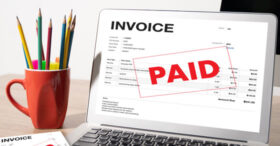Vendor fraud can be costly — particularly when several perpetrators are involved. The median loss of a fraud scheme conducted by two individuals is $200,000, according to the Association of Certified Fraud Examiners. Losses rise precipitously to more than $500,000 when four or more people commit the fraud. These schemes typically involve the collusion of employees with outside parties or a conspiracy between suppliers. But you can help prevent vendor fraud in your business by familiarizing yourself with the schemes.
Types of schemes
Vendor fraud can take one of several forms. Price fixing is an agreement among competitors to set the same price for goods or services. It also refers to competitors jointly establishing a price range or minimum price. Such agreements violate the Sherman Antitrust Act, regardless of whether the prices are unreasonable.
A similar fraud is bid rigging, where two or more vendors agree to steer a company’s purchase of goods or services. Bid-rigging schemes include:
Bid rotation. Vendors participating in the scheme take turns as the low bidder.
Bid suppression. Two or more vendors illegally agree that at least one of them will withdraw a previously submitted bid or not bid at all.
Complementary bidding. Some of the vendors participating in the scheme submit token bids with a high price or special terms that will make them unacceptable to the company.
Another way vendors cheat is through market division. This occurs when competitors agree not to compete in a specific segment of a market. If bids are solicited by a customer in, for example, a certain geographic region, the competitors either won’t bid or will submit complementary bids. This drives up the price for the soliciting company.
Kickbacks and inflated invoices
In kickback schemes, vendors bribe employees on the inside to submit or authorize payment of fraudulent invoices. Vendors typically incorporate kickback payments in the invoice — compounding the amount companies are overbilled.
Vendors can also submit inflated invoices in more subtle ways. The price charged may exceed prices agreed upon in the contract, the invoice might reflect charges for more goods than the customer actually received or a vendor could alter the date on a genuine invoice and submit it for duplicate payment.
Preventing abuse
Knowledge is power, but it’s not always easy for owners and employees to spot vendor fraud in progress. Make sure you carefully vet all new vendors and investigate any vendor/employee relationship that seems unusually close. Finally, contact us to perform a vendor audit.
© 2021 Covenant CPA



